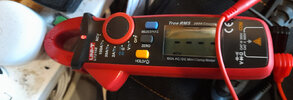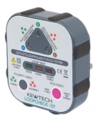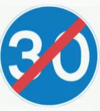I have looked on you tube to see what offerings there are for instructions on how to wire a UK plugtop.
Some seem ok but how many put the emphasis on getting the earthwire long enough to avoid pull out until last?
They all (most) seem to follow the rule of making the earthwire long but IMHO not always long enough.
I was taught to make them long enough to snuggly fit against the long curve portion of the space so that they would only pull out once the live conductors are well clear of the terminals.
Line should be short and no slack (or extremely little at best) N same or preferably ever so slightly longer , the E a good way behind .
That way Line comes out first , very closely followed by N (or even at the same time) the E once L & N are clear of terminals (hopefully).
Even that little card that manufacturers put on the plug don`t seem to help with decent dimensions.
I don`t think I`m being pedantic but merely this was how it should always be done.
It is second nature, for me, to do it this way and was taught at school back in my youth and retaught at most apprenticeships etc as far as I can see.
It does not always seem to be taught nowadays.
Of course there are often plugs put on (even sometimes by electricians) that are made off poorly in other ways too.
PS - when I`ve twisted the flex I often double it on the smaller conductors too, in order to make a decent mechanical and electrical join.
Some seem ok but how many put the emphasis on getting the earthwire long enough to avoid pull out until last?
They all (most) seem to follow the rule of making the earthwire long but IMHO not always long enough.
I was taught to make them long enough to snuggly fit against the long curve portion of the space so that they would only pull out once the live conductors are well clear of the terminals.
Line should be short and no slack (or extremely little at best) N same or preferably ever so slightly longer , the E a good way behind .
That way Line comes out first , very closely followed by N (or even at the same time) the E once L & N are clear of terminals (hopefully).
Even that little card that manufacturers put on the plug don`t seem to help with decent dimensions.
I don`t think I`m being pedantic but merely this was how it should always be done.
It is second nature, for me, to do it this way and was taught at school back in my youth and retaught at most apprenticeships etc as far as I can see.
It does not always seem to be taught nowadays.
Of course there are often plugs put on (even sometimes by electricians) that are made off poorly in other ways too.
PS - when I`ve twisted the flex I often double it on the smaller conductors too, in order to make a decent mechanical and electrical join.









